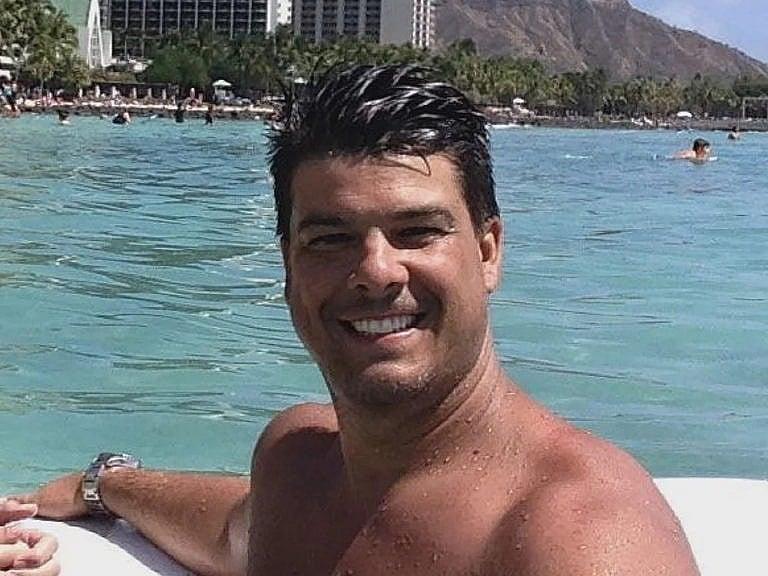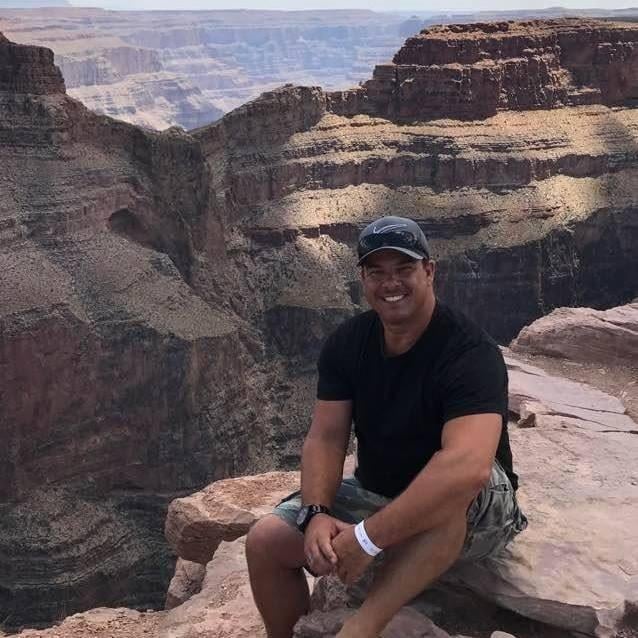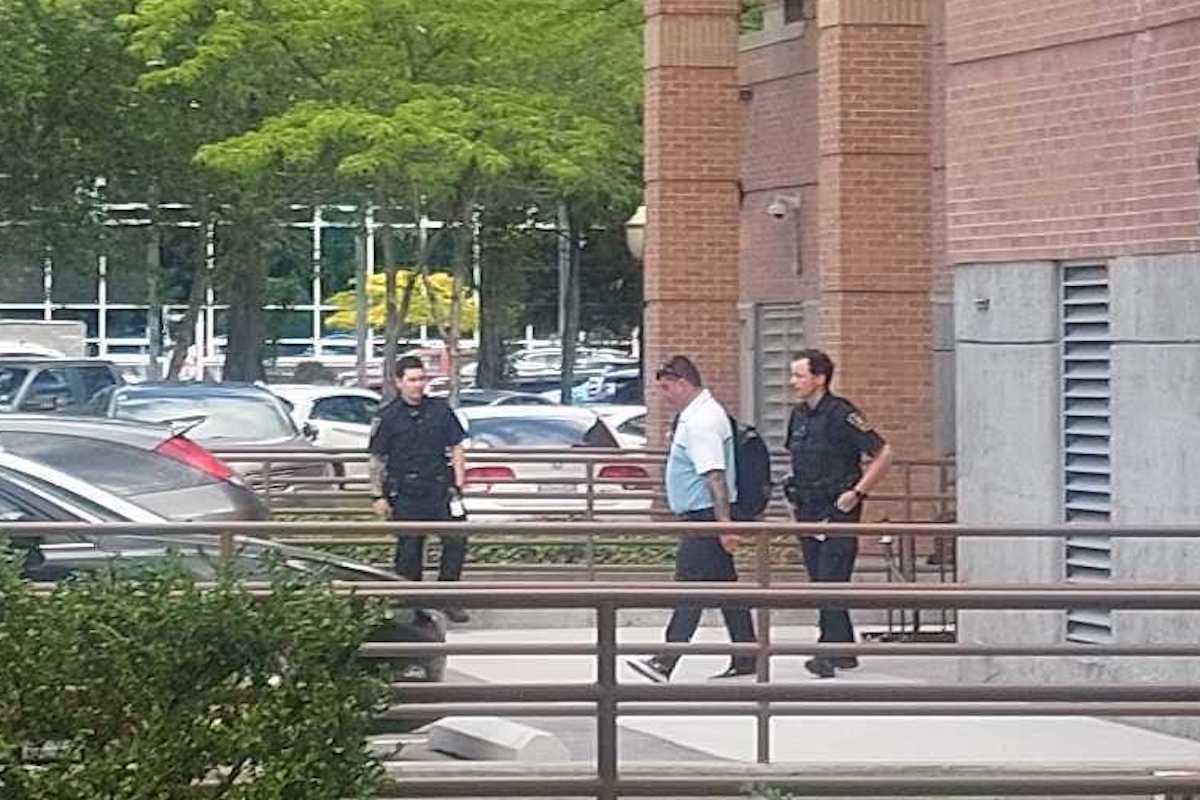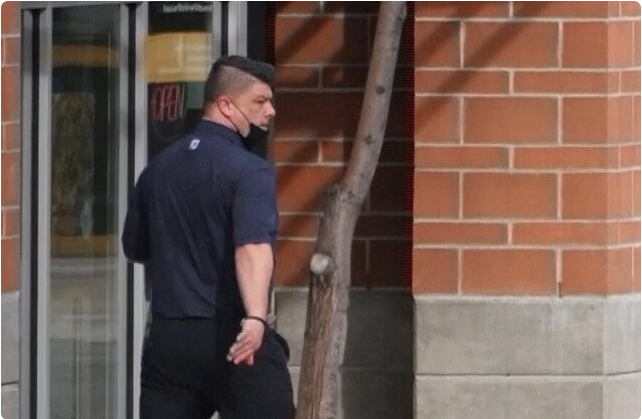The Grifter Guardian
Kelowna social worker Robert Riley Saunders faked his credentials, charmed his bosses and stole nearly half a million dollars earmarked for the vulnerable kids in his care

While pilfering money intended for kids in his care, Saunders lived large, buying a boat and a house on a golf course and going on tropical vacations
Share
In 2007, when Beth was six years old, the Kelowna office of British Columbia’s Ministry of Children and Family Development, or MCFD, placed her in foster care while her mother was in a treatment facility for alcoholism. Living in strangers’ homes, she faded into the background. She felt like she was no one’s priority. By the time she was 14, Beth, a member of the Carrier Sekani First Nations, was homeless and couchsurfing with friends and extended family. (Beth is not her real name; I’ve agreed to use a pseudonym to protect her privacy.) Kelowna’s family services appointed Robert Riley Saunders, a social worker who managed care for Indigenous youth, to handle her case. Once a month, Saunders would take her for lunch. He gave her gift cards that she could spend at the mall. “I thought he was a nice, cool person,” she says. Saunders told Beth that she reminded him of his daughter.
One day in 2016, when Beth was 15, Saunders took her to a local branch of Interior Savings Credit Union and told her she needed to open an account. Saunders had done the same thing for Beth’s older brother, whose case he also handled. When Saunders and Beth walked into the branch, they were escorted into a private office. Beth saw that he was holding several cheques made out to her. “I got excited,” she says. “I was like, ‘Are those all for me?’ ” Saunders chuckled and told her that no, the cheques were not for her. He didn’t explain further. “I was confused,” she says. “They had my name on them. We were opening an account for me. But the bank dude was just sitting there.” The employee handed Beth some paperwork, which she filled out. And then Saunders drove her home. “I guess I thought kids were supposed to have bank accounts,” she says. The bank had given her a debit card, but because she believed she didn’t have any money, she never used it.
A year later, Beth was back with her mother. Family friends let them stay in spare rooms, until those friends got evicted themselves. Saunders sometimes helped Beth and her mom move to a new place. Beth was pregnant with her first child and signed up for a program in downtown Kelowna for Indigenous job seekers. The program would pay her to attend, but she had to provide banking information. The only bank account she’d ever had was the one that Saunders opened for her, so Beth, her brother and her mom visited the branch. When she asked about her account, a teller handed over a stack of statements indicating numerous deposits and near-immediate transfers of the same funds out of the account. There were tens of thousands of dollars in transactions, but the balance was near zero. Beth’s older brother asked for his statements, too, and they showed the same pattern.
Right around this time, just as Beth was starting to suspect something wasn’t right, the authorities at the Kelowna family services office began to investigate Saunders. Their investigation would ultimately reveal that Saunders had been doing the unthinkable: stealing government funds earmarked for the most vulnerable kids in our society. He manipulated homeless teens, many of them Indigenous, to sign over funds intended to help them survive. The British Columbia social services system was so poorly organized and badly supervised that his crimes went undetected for years.
***
Last year, the ministry budgeted about $50 million in spending for the 4,852 children in its permanent care. A child’s social worker—what the MCFD calls a guardianship worker—is responsible for finding them permanent living arrangements, often through adoption, alternate family placements or foster care. This can be particularly challenging in the cases of older children and adolescents. At the age of 16, kids might be approved to live on their own but receive financial support from the MCFD—what’s referred to as a Youth Agreement. They might also receive “start-up” funds to help purchase things like furniture, dishes, pots, pans and the other things that transform an empty apartment into a functioning home.
Saunders’ salary as an MCFD guardianship worker was about $70,000, but he lived well above his means. He had expensive tastes and he liked to show off. He lived with his wife and their two children in an upscale home on a golf course. He bought a boat and made regular trips to Las Vegas. The seemingly carefree, prosperous nature of Saunders’ lifestyle was at odds with the youth in his care, who often struggled to pay for food and lived on the street.
Saunders was born in Winnipeg in 1970, the child of parents who struggled with alcohol addiction and separated when he was in his mid-teens. He’d hoped to become a professional hockey player, a dream that ended when he broke a leg at 16. He enrolled at the University of Manitoba and took some general arts courses but never graduated. By 1995, he started working in Winnipeg as a rehabilitation counsellor at a private agency. A year later, he applied for a job as a social worker with the MCFD in Fort St. John, British Columbia.
There was only one problem: he didn’t have the credentials. With the help of his girlfriend at the time, he forged a diploma from the University of Manitoba, claiming he had a bachelor’s degree in social work. He was told that he would have to provide a certified copy of his degree, but no one ever followed up with him about it. Saunders exploited another loophole: unlike other social workers in the province, MCFD employees aren’t required to register with the BC College of Social Workers. Because the college obtains all documentation—such as diplomas—directly from institutions rather than prospective members, its staff would have likely discovered his ruse. In 2001, he asked for a transfer to the MCFD’s Kelowna office, where he was eventually moved to the group that works with Indigenous permanent wards.
In recent pictures, Saunders, with dark hair and eyes, has the easy grin and conventional if somewhat beefy good looks of a man who is accustomed to things going his way. He appears confident and fun, whether he’s beaming over a fluffy golden retriever puppy or clutching a surfboard at an oceanside resort, an expensive-looking watch on his wrist.

I spoke to one woman who met Saunders when he was coaching her daughter’s softball team. The kids seemed to like him, but the woman wasn’t impressed, describing him as a “typical Kelowna douchebag.” Translation: he was arrogant and brash, a loud talker with a machismo-tinged bravado that rubbed some people the wrong way. Still, even those who didn’t like Saunders respected him. He was a social worker with the MCFD, after all, a challenging job that surely brought out the best in him.
In 2011, Saunders and his wife divorced, and he needed money. He saw how, despite the frequent reviews and requirements for paperwork and approvals, staff at the MCFD didn’t pay close attention to all the cheques issued for kids in their care. Saunders realized he could open joint bank accounts with his charges, take advantage of their lack of financial experience and secretly divert the funds back to himself. He couldn’t steal from kids living in foster homes, where the foster parents were expecting cheques from the ministry. And he had to be careful not to target kids who were in fact living independently and paying rent, as they would ask about what funds were available to help them. His sweet spot was the kids who lived on the margins and slipped out of the system—the ones sleeping on the streets, in and out of troubled homes or couchsurfing like Beth. They were kids who often had no one looking out for them. Saunders deliberately steered them away from stability in order to line his own pockets.
One of the kids Saunders bilked was a boy I’ll call Henry. He had been in care since he was 14. He wanted to live with his dad, but the situation at home was volatile, and Henry was placed in a series of foster homes. At weekly check-in appointments, Saunders would pass along vouchers for food or clothing, typically for $100 or $120 each. Henry got no more than three vouchers a month, and he was expected to keep receipts to prove that he was spending them as intended. At some point, Saunders took Henry to Interior Savings Credit Union and helped him open an account. Henry never used it again.
When Henry was 16, Freddie Kabok, a youth worker at the Bridge, a social service agency that works in partnership with the ministry to help kids transition out of care, told him about his options for independent living. Henry was an ideal candidate to receive provincial financial support to help pay for rent, food and other necessities—what’s called an independent living fund. When Kabok texted Saunders in November of 2017, wanting to discuss Henry, Saunders dismissed Kabok’s suggestion. “Henry asked about independent living,” Saunders texted. “I have advised him there really is no such thing as far as providing Henry with his own place. So if he ever mentions it to you please don’t encourage it.”
By this point, Saunders had already been collecting cheques in Henry’s name for more than a year. From March of 2016 to January of 2018, Saunders issued two cheques a month for $579 each, which he then deposited into their joint account—a total of more than $50,000.
Saunders was doing the same with a dozen other kids. He’d create false documents to facilitate the issuance of cheques by the MCFD, forge the signatures of both the kids in his care and his supervisors, approve his own cheque requests, and fill out paperwork to make it appear that he had forwarded the cheques to the intended recipients. He thought he’d covered his tracks.
***
In December of 2017, Saunders’ usual supervisor, Siobhan Stynes, was on vacation and a social worker named Andrea Courtney was filling in as the team lead. Saunders was usually able to both request and approve cheques for children in his care, but some payments still required a supervisor’s signature. In Courtney’s inbox were 10 forms from Saunders awaiting her approval, and one of them caught her attention. It was a request for independent living funds for a kid I’ll call Quentin, whom Courtney was familiar with. She knew that Quentin was in youth custody and therefore not entitled to independent living funds. She called Saunders to ask why he was issuing cheques to an individual who didn’t need the funds. Saunders told her that he was giving the cheques to Quentin’s mother. But when Courtney called her, she said she hadn’t received any money from the MCFD in years.

That same month, Beth showed up at the Kelowna family services office after she’d discovered the transactions in her account. She asked Courtney if someone could explain why there was money moving in and out. Had those cheques in fact been for her? Did this have something to do with Saunders? Courtney told Beth that she was on the right track—and that she would soon get answers.
When Courtney next spoke to Saunders, his story changed. This time, he claimed that he was depositing the cheques in Quentin’s account for when Quentin got out of jail. Courtney asked Saunders to provide screenshots of the bank transactions; he said he would, but he never did. Courtney, now sure that something was very wrong, told Saunders that he needed to come clean. She suggested they go to their manager together, but Saunders refused. He kept telling her to drop it, that there was no need to look into the matter any further.
Saunders targeted kids who lived on the margins and slipped out of the system, who were living on the streets, in and out of troubled homes or couchsurfing. Kids who had no one looking out for them.
Courtney did keep looking, and she and another manager ultimately reported Saunders to ministry officials. An investigation uncovered a pattern of fraud. Officials soon learned that, under the guise of paternalistic concern, Saunders would take his kids to TD Bank or Interior Savings Credit Union and help them open an account. It was his duty as a social worker to help them learn the ropes of financial management. But he was actually opening joint accounts. Saunders would have cheques issued for the youth in his care—victims A through X, as they were later known in court documents—and deposit the money into those accounts. Almost immediately, he would transfer those funds into his personal account or use them to pay off his credit card bills. Over a six-and-a-half-year period, Saunders had the MCFD issue more than 850 cheques totalling over $460,000—an average of $541 per cheque.
Over the years, his thefts got bigger. In 2015, the amount he transferred through those joint accounts was $81,641. In 2016, it was $104,431. And in 2017, it was $125,200. A man whose job was to protect and support vulnerable Indigenous youth was taking their money. And his employer—the government—had made it easy for him to get away with it.
***

After Courtney presented evidence of his fraud to ministry officials, Saunders was suspended with pay in January of 2018. He disappeared from Kelowna just as word of his many transgressions hit the local news. The RCMP tracked him down in Calgary, where he had been living with one of his sisters and working at a golf course and then a pet store. The cops brought him back to Kelowna to face multiple counts.
In September of 2021, Saunders pleaded guilty to three charges: defrauding the province, forging a university diploma and breaching public trust. In court last summer, Saunders appeared to be humbled; he was sorry, he said. He wished he could roll back the clock and make things better. If he knew then what he knew now—principally, one assumes, that he would be busted—he would make different choices. (I received no replies when I contacted Saunders and his lawyer.)
Saunders was willing to acknowledge that he’d abused his position as a social worker to steal hundreds of thousands of dollars from the ministry. What he wouldn’t do was admit that he had caused harm to the youth in his care.
Saunders opened joint accounts with the kids in his care and tried to cover his tracks. He created false documents to issue cheques and forged the signatures of his supervisors.
Saunders told the court that he viewed his work with youth as an exercise in futility. He blamed the kids for their own outcomes, citing their lifestyles of addiction and criminal behaviour. He also blamed holes in the province’s social work system for the fact that he was able to defraud it, and even pointed a finger at his superiors for not catching him in the act sooner. He said that a kid who didn’t have a home didn’t need government money. He didn’t think they could be trusted to spend it responsibly.
This argument didn’t fly. Steven Wilson, the presiding judge at the criminal hearings, found that Saunders not only acted contrary to the best interests of the youth in his care, but that his actions resulted in material and sometimes emotional deprivation. Some kids alleged that he could be cruel. In one civil complaint, an Indigenous youth said that Saunders subjected her to chronic verbal and emotional abuse, intentionally undermining her sense of self-worth so as to dissuade her from the belief that she might be entitled to financial support from the province for basic needs like food, clothing or shelter. She ended up homeless and hungry. At times, she was hooked on hard drugs like meth, crack and cocaine.
Wilson’s pre-sentence report described Saunders as having a flexible moral compass and indifferent to how his actions might affect others. “This moral ambivalence prevented him from gaining genuine insight into his behaviour until, that is, he got caught and must now face the consequences,” states the report. In July, he was sentenced to five years in prison.
***
Saunders wasn’t an individual bad actor who exploited an otherwise decent system. The neglect seems to extend far beyond him. Andrea Courtney had been acting supervisor for only one hour when she cottoned on to Saunders’ transgressions. She explained to the court that it typically takes five people to issue a cheque: one to make the cheque request, one to approve it, one to print the cheque and another two to sign it. In Saunders’ case, he was able to input and approve cheque requests with no oversight, forging signatures when necessary. Wilson noted that Saunders’ fraud should have been obvious.
Especially because there were early signs of trouble. Saunders was known among colleagues for his lack of diligence and sloppy note-taking, which was something his supervisors never seemed particularly concerned about. He failed to complete the required youth care plans and he didn’t prepare any of his charges for aging out of care. This is a formal process that’s supposed to begin when a kid is 15, where they learn about how to find housing, obtain appropriate ID and file taxes. Saunders even kept incomplete contact information for some of his kids.

Saunders pleaded guilty to three charges, but told the court that he viewed his job as an “exercise in futility” and that he blamed the social work system for allowing him to get away with fraud for as long as he did
A 2003 performance review noted that he had been reprimanded for making disparaging remarks about Indigenous children. Saunders was also admonished in 2004, that time for withholding a client’s money and deliberately avoiding oversight of financial transactions. Yet later that year, Saunders’ supervisors thought highly enough of his work to assign him to a unit that specialized in high-risk Indigenous youth.
One counsellor who often worked with Saunders told me how he flaked on the kids, ignored their calls, withheld resources and failed to inform them about meetings related to their care. Once, during a mediation, she was shocked when Saunders talked about the youth, who was present, without directly addressing or involving them. The counsellor kept interrupting to make sure the teen understood and to determine whether they had any questions. Saunders’ most recent supervisor, Siobhan Stynes, who was also present at the meeting, observed passively. “She let him run the show,” says the counsellor.
According to the province’s Child, Family and Community Service Act, children in care have the right to be nurtured, to be consulted about significant decisions affecting them, to be informed about their plans of care and to receive guidance related to their cultural heritage. Guardianship workers must have in-person, private visits with children and youth at least every 90 days, and more frequently if possible. They are supposed to be there for birthdays and other special occasions. Workers are expected to share care plans and progress with their team lead, typically on a weekly basis.
Saunders was careless about completing the plan of care documents for his kids, but he was far from the only offender—an MCFD audit in 2020 found that up to 15 per cent of cases had incomplete plans. During an internal investigation prompted by Courtney’s discoveries, Saunders himself admitted that he was emboldened because his employer turned a blind eye and there was little accountability to ensure he was actually caring for the kids entrusted to him. When no one flagged the first illicit payments, he decided to keep going.
Jennifer Charlesworth, who leads the province’s office charged with monitoring children and youth services, believes Saunders was enabled by a culture of silence at the MCFD, and that employees stuck together rather than flagging concerns—until Andrea Courtney stepped into a leadership role and broke the pattern.
The MCFD declined my interview request, but a spokesperson, Gayle Mavor, provided a written statement. “We offer our heartfelt apologies to all the young people who have been affected,” it reads.
In response to the Saunders revelations, the MCFD conducted internal reviews, partnered with professional organizations for additional oversight and provided compensation of approximately $15 million to the kids Saunders stole from. The Office of the Provincial Director of Child Welfare launched its own special review, including interviews with children and youth in care, along with their families. At least one high-ranking MCFD director was fired, but none of Saunders’ immediate colleagues have been charged. Perhaps the most significant change is that staff are no longer able to initiate and print cheques without the involvement of a second staff member. And yet as far as I can tell, the MCFD has taken zero action to address the institutional neglect that some of its employees and kids in care have raised.
The BC Association of Social Workers is now campaigning to have the law regulating social workers in British Columbia amended so that MCFD workers are required to register with the college. That would prevent someone unqualified, like Saunders, from gaining work with the ministry.
MCFD has launched a consultation related to the oversight of social work, and the report should be released in April. But Michael Crawford, the association’s president, says that in recent years the MCFD has loosened, not tightened, restrictions. Years of recruitment challenges and high turnover led to a change in January of 2019 regarding the education child protection workers need. Whereas before they required a degree in social work, now a degree in a relevant “human services field” is sufficient.
The Saunders case underscores the over-representation of Indigenous children in government care. According to the MCFD, the 2019 rate of children in care in British Columbia was 6.76 per 1,000 for all children and youth across the province but was 43.8 per 1,000 for Indigenous children and youth. Cheryl Casimer, the political executive of First Nations Summit, a B.C. political organization comprised of First Nations and tribal councils, says that the child welfare system that currently exists might as well be an extension of the residential school system. “It’s not a system that was created to nurture and care for Indigenous people,” she says. “And it certainly doesn’t have the supports to nurture the traditions and culture and the connectivity and language required for kids to thrive. So, our youth in those systems of so-called care end up moving to the justice system. It’s a vicious cycle.”

Meanwhile, those formerly under Saunders’ care launched some two dozen civil suits, naming both the MCFD and Interior Savings Banking Union (which has denied culpability) as knowing or unknowing co-conspirators. The civil suits alleged that Saunders chose high-risk Indigenous youth as his targets because they were already disregarded and Saunders knew that if they complained about him, his supervisors and managers likely wouldn’t believe them. “They were the most marginalized, the most disconnected and the ones who were the least likely to raise any concerns because they didn’t know that they had rights,” says Charlesworth. “And no one was asking them, what’s your experience? Are you feeling well supported?”
Michael Patterson, a lawyer in Penticton who represented several people in this case, says it’s proof of a broken institution. “He could have put these kids in a crack house, and no one would have batted an eye.”
Some of Saunders’ former charges got six-figure settlements—a fortuitous turn after years of deprivation
One of Saunders’ former charges, who I’ll call April, wishes that there had been some form of Indigenous-led restorative justice process. “It would’ve been nice if the kids had been able to express to him how he’s affected their lives,” she says. She describes a lingering sense that she just wasn’t important enough to protect, plus a general distrust of authorities. Today, she has a disabled son and finds interactions with social workers a challenge. The anger and anxiety haven’t gone away. “I think it will last forever,” she says.
Some people are forced to contend with proximate and generational trauma. Others, like Saunders, are Teflon. As a result of his actions, he was pushed out of his job and publicly humiliated, and his relationship with his two children is reportedly strained. But the court documents also talk about the sisters who love him, his second-chance employment with a landscaping company and a new relationship with a woman who supported him throughout his reckoning. Robert Riley Saunders, unlike the kids in his care, had such a massive head start in life that he was back on his feet even before he went to prison.
A group of Saunders’ victims joined a class-action lawsuit against MCFD that claimed the system had failed them for decades. The MCFD settled the class action in 2020, acknowledging responsibility. Some of the complainants ended up with six-figure settlements from the province—a fortuitous turn after years of deprivation.
Beth was part of the class action. She ended up with a sizable settlement, which she used to buy a truck and a five-bedroom home for herself and her two small children. The money doesn’t make up for what happened, but she’s happy to use it to build a secure life for her family.
With such a big home, Beth is considering becoming a foster parent. She’s been mostly on her own for as long as she can remember, and she wants to give kids a different experience than the one she had. “Saunders did not support me,” she says. “He didn’t help me the way that he should have. He saw all of us kids drowning, and he was okay with it.”
This article appears in print in the March 2023 issue of Maclean’s magazine. Buy the issue for $9.99 or better yet, subscribe to the monthly print magazine for just $29.99.
